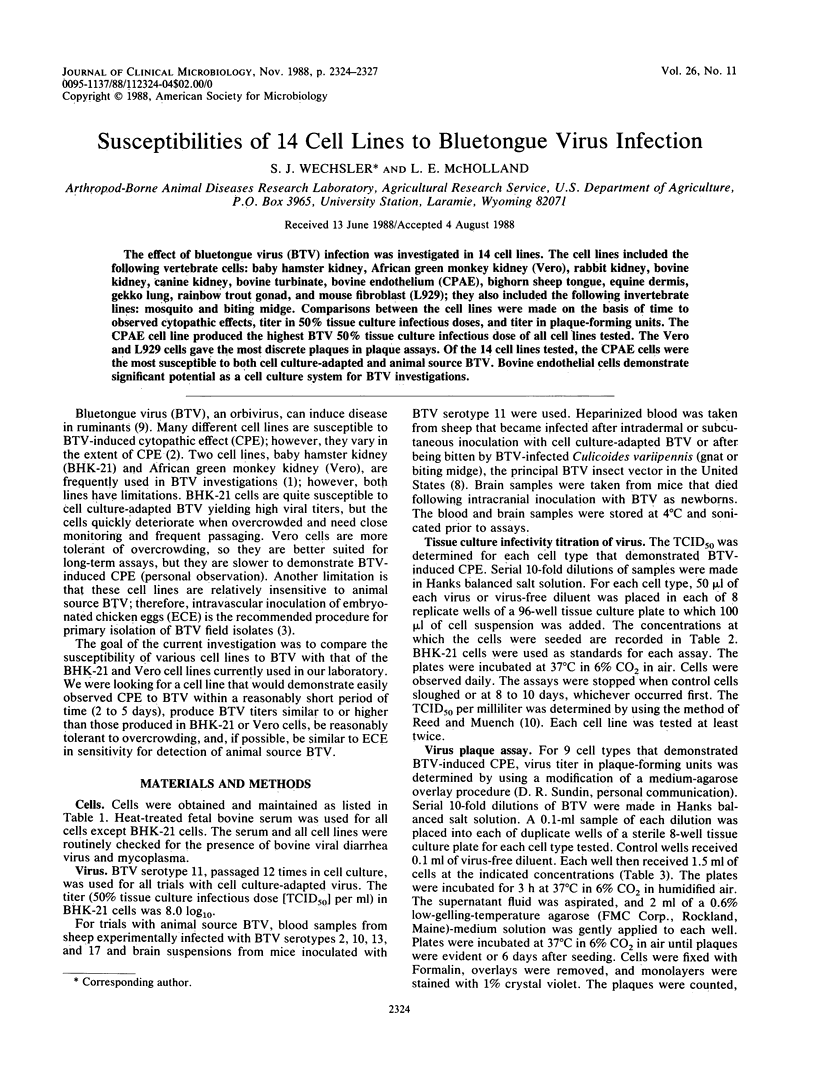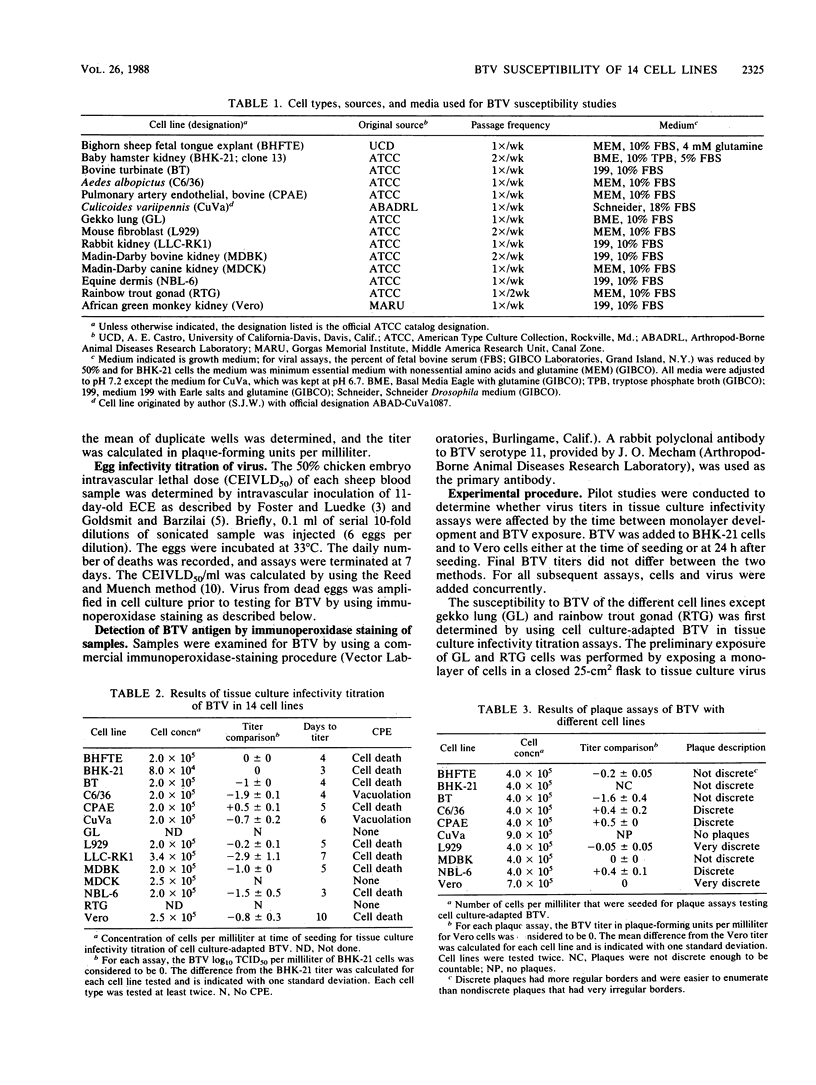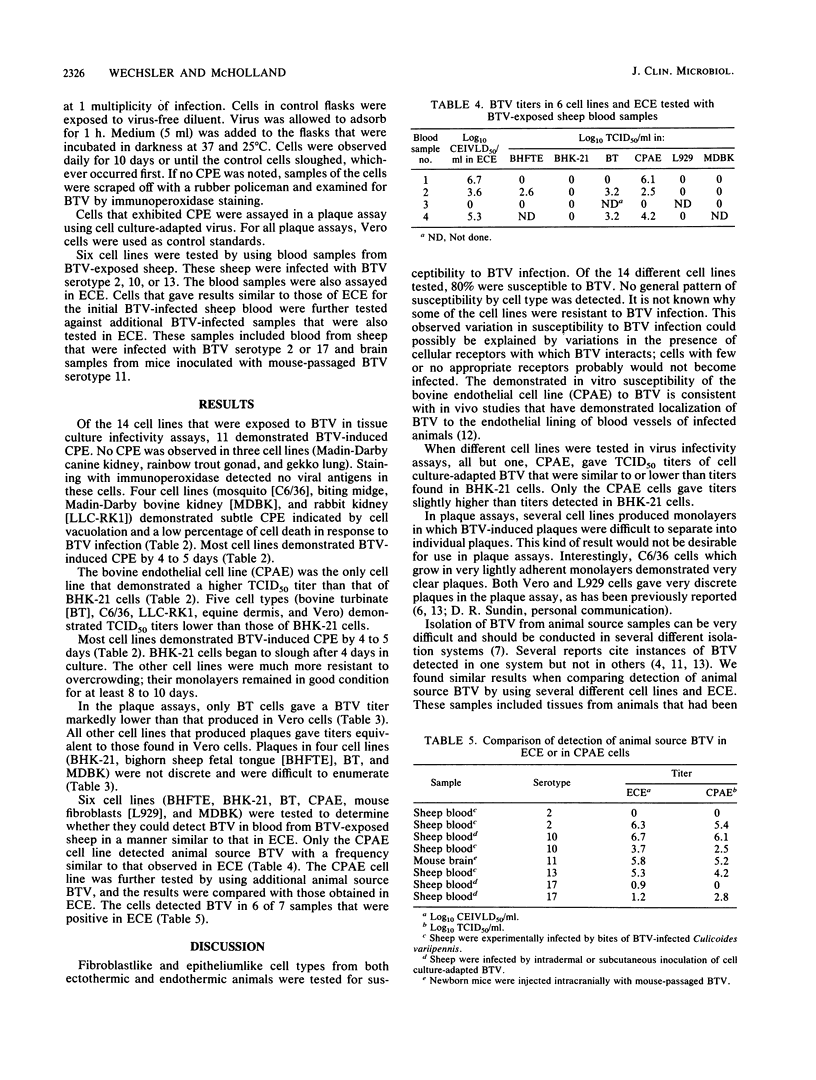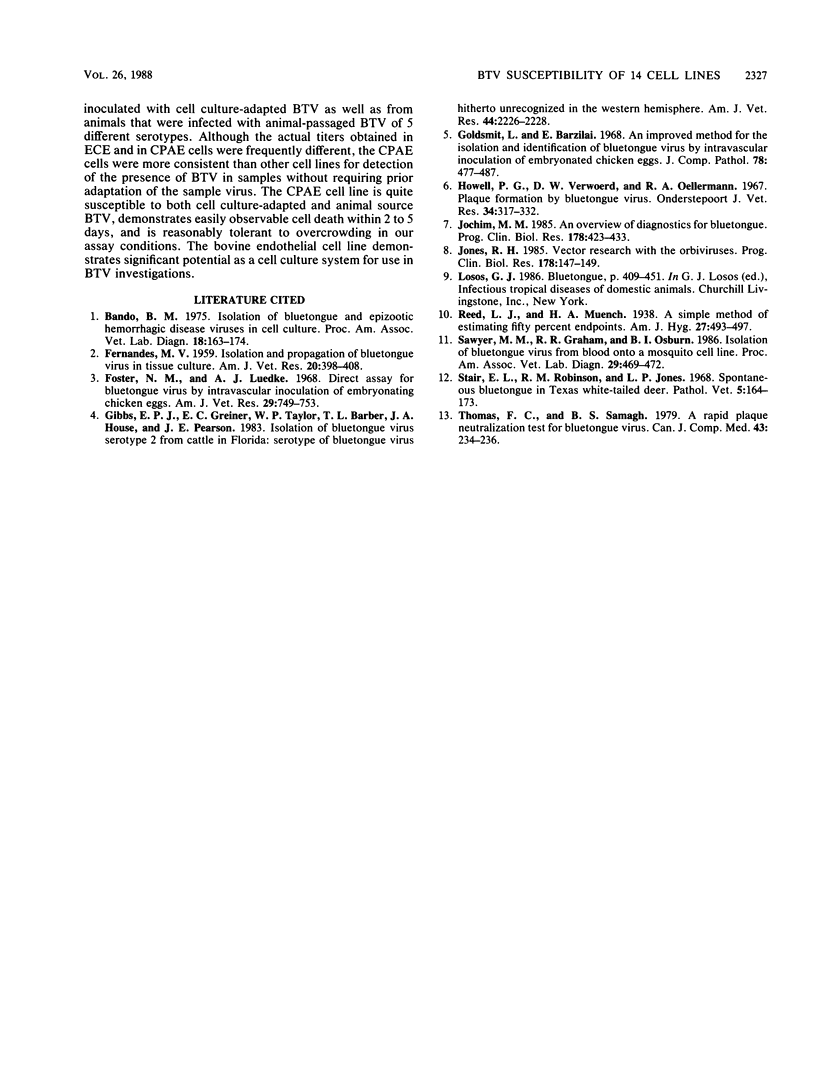Abstract
The effect of bluetongue virus (BTV) infection was investigated in 14 cell lines. The cell lines included the following vertebrate cells: baby hamster kidney, African green monkey kidney (Vero), rabbit kidney, bovine kidney, canine kidney, bovine turbinate, bovine endothelium (CPAE), bighorn sheep tongue, equine dermis, gekko lung, rainbow trout gonad, and mouse fibroblast (L929); they also included the following invertebrate lines: mosquito and biting midge. Comparisons between the cell lines were made on the basis of time to observed cytopathic effects, titer in 50% tissue culture infectious doses, and titer in plaque-forming units. The CPAE cell line produced the highest BTV 50% tissue culture infectious dose of all cell lines tested. The Vero and L929 cells gave the most discrete plaques in plaque assays. Of the 14 cell lines tested, the CPAE cells were the most susceptible to both cell culture-adapted and animal source BTV. Bovine endothelial cells demonstrate significant potential as a cell culture system for BTV investigations.
Full text
PDF



Selected References
These references are in PubMed. This may not be the complete list of references from this article.
- Foster N. M., Leudke A. J. Direct assay for bluetongue virus by intravascular inoculation of embryonating chicken eggs. Am J Vet Res. 1968 Mar;29(3):749–753. [PubMed] [Google Scholar]
- Gibbs E. P., Greiner E. C., Taylor W. P., Barber T. L., House J. A., Pearson J. E. Isolation of bluetongue virus serotype 2 from cattle in Florida: serotype of bluetongue virus hitherto unrecognized in the Western Hemisphere. Am J Vet Res. 1983 Dec;44(12):2226–2228. [PubMed] [Google Scholar]
- Goldsmit L., Barzilai E. An improved method for the isolation and identification of bluetongue virus by intravenous inoculation of embryonating chicken eggs. J Comp Pathol. 1968 Oct;78(4):477–487. doi: 10.1016/0021-9975(68)90047-9. [DOI] [PubMed] [Google Scholar]
- Howell P. G., Verwoerd D. W., Oellermann R. A. Plaque formation by bluetongue virus. Onderstepoort J Vet Res. 1967 Dec;34(2):317–332. [PubMed] [Google Scholar]
- Jochim M. M. An overview of diagnostics for bluetongue. Prog Clin Biol Res. 1985;178:423–433. [PubMed] [Google Scholar]
- Jones R. H. Vector research with the orbiviruses. Prog Clin Biol Res. 1985;178:147–149. [PubMed] [Google Scholar]
- Stair E. L., Robinson R. M., Jones L. P. Spontaeous bluetongue in Texas white-tailed deer. Pathol Vet. 1968;5(2):164–173. doi: 10.1177/030098586800500207. [DOI] [PubMed] [Google Scholar]
- Thomas F. C., Samagh B. S. A rapid plaque neutralization test for bluetongue virus. Can J Comp Med. 1979 Apr;43(2):234–236. [PMC free article] [PubMed] [Google Scholar]


